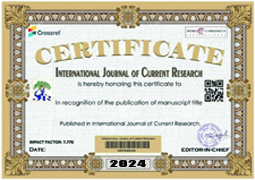Pigeonpea [Cajanus cajan (L.) Millsp.] belongs to the genus-Cajanus, subtribe-Cajaninae, tribe-Phaseoleae, order-Fabales,family-Fabaceae and sub-family Faboideae. There are two types of pigeon pea viz., 1) Cajanus cajan variety bicolor:- the colour of the flower of this variety is yellow, the plant is bushy and tall, pods are of dark colour which contains approx four to five seeds, we do its cultivation all over the world and 2) Cajanus cajan variety flavus:- the color of the flower of this variety is also yellow as compared to variety bicolor the size of the plant is small, the pod also contain only two to three seeds, but this is an early maturing variety so it is cultivated more, it is also cultivated all over the world. The name pigeonpea was first used in Barbados where pigeon were fed the seeds of Cajanus cajan . Red gram (Cajanus cajan L.) belonging to Leguminosae family has several species that vary in height, habit, maturation period, colour, size, and form of pods and seeds. In India the plant is known by various different names such as; Assamese: arahar,• Bengali: arahar, mirai-maha, • Gujarati: tuver, • Hindi: arhar, tuvar, • Kannada: togari bele, togari kalu, • Konkani: tori, • Malayalam: adhaki, tuvara, • Manipuri: mairongbi, • Marathi: tur, • Oriya: har-har, kakshi, tubara, • Punjabi: dinger, • Tamil: adhaki, iruppuli, kaycci), and tuvarai, • Telugu: adhaki, kandi, togari, tuvaramu, and in Urdu: اarhar, tuar. The centre of origin is the eastern part of peninsular India, including the state of Orissa, where the closest wild relatives occur. Pigeonpea being a leguminous plant is capable of fixing atmospheric nitrogen and thereby restore lot of nitrogen in the soil. Every Red gram plant is a mini-fertilizer factory as the crop has unique characteristics of restoring and maintaining soil fertility through fixing atmospheric nitrogen in symbiotic association with Rhizobium bacteria present in the root nodules. Red gram has a deep root system, and it extracts minerals, nutrients, moisture from the deep soil. In this process, it breaks the hardpans of the soil, which is helpful in improving the structural condition of the soil. Red gram is also useful for preventing soil from erosion. Nowadays, it is a major problem. It encourages the moment of water in the soil. Red gram is a very important source of protein, iron, iodine & some essential amino acids like lysine, tyrosine, cystine, protein percentage in red gram is approx 22.3% so we know it as a rich source of protein, it is consumed as dal and also used for preparing curries. We use the sweet green pod as a vegetable. Red gram crop is suitable for inter-cropping, with different crops (Cotton, Sorghum, Pearl millet, Green gram, Black gram, Maize, Soybean, Groundnut) for increasing production and maintaining soil fertility. It is an important pulse crop which is mainly grown in developing countries of the world. In India, red gram is widely cultivated and accounts for 15 to 20 per cent of the pulse production in the country. Globally, India is the largest producer and consumer of red gram. In India arhar is mostly grown in the states of UP, MP, Maharashtra, Bihar and Andhra Pradesh, Punjab, Haryana, West Bengal, Assam, Orissa, Rajasthan, HP, Gujarat, Jammu and Kashmir, Karnataka, Tamil Nadu, Kerala. However, the major area is restricted to north Indian states. In this review article on Origin, Domestication, Taxonomy, Botanical Description, Genetics and Cytogenetics, Genetic Diversity, Breeding, Uses, Nutritional Value and Health Benefits of Pigeonpea are discussed.





